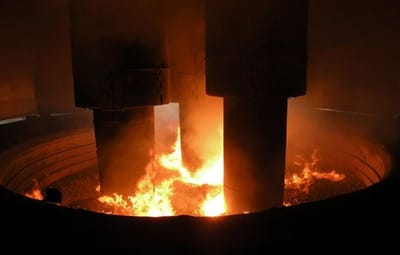Technical Audit

Technical and Financial Audit
During this phase it is paramount that as much information as possible be gathered and this can only be achieved by close cooperation and participation with our operators in DRC. This participation would involve e-mail correspondence, visits to the various sites and bi-weekly progress meetings. It is intended during this phase to satisfy Steencore’s requirements or their SOW. In summary this phase is to provide a fast audit of both plants to establish the positive cash flow. To satisfy items identified by the project team, we proposed that a standard engineering approach be taken by defining a work break down structure (WBS) which would comprise of the following deliverables per plant:
- Block Flow DIagram (BFD);
- Process Description;
- Process Design Criteria (PDC)
- Mass and Energy Balances;
- Mechanical Equipment List (MEL);
- Future Operating Expenses (OPEX);
- Future Capital Expenditure (CAPEX);
- Financial Model incorporationg sensitivity analysis; and
- Audit Report presenting both technical and financial outcomes.
The above items are discussed in more detail with examples provided where applicable. The following should be noted:
These items from the basis for the proposed subsequent phases.
BFD, Process Description and PDC are geared for gathering information and input from DRC as required.
Block Flow Diagram
BFD is the simplest form of representation of the process and shows major equipment and their logical sequence within the process. The diagram can also be used to visually show battery limits as well as the breakdown of unit operations. This diagram will be referred to the process description.
Process Description
The process description with reference to the BFD describes the process and the equipment employed as well as the function of the equipment. The chemistry employed in the process is also presented and how this is exploited to achieve the final product.
Process Design Criteria
This is the single most important document as is the basis for the plant’s design and captures all information relating to the process and equipment as is. Process information captured includes and not limited to the following:
- processing hours;
- production rate;
- metal recovery;
- operating parameters;
- reagent information and consumption;
- Utility and Services requirements; and
- Equipment basic specifications.
This document is a Microsoft Excel spreadsheet. This document forms the basis for the review of the current processes as is, as well as a basis for the Technical Manual proposed in Phase 3. This document provides inputs for the Mass and Energy balance which is fundamental for compiling the OPEX and CAPEX which is then used for the financial model.
Mass and Energy Balance These balances confirm the correct deportment of materials across the process such as valuable metals, waste and reagents. Energy balance confirms energy requirements. These balances provide inputs into the operational expenditure such as reagents, utilities and services, and energy. It also allows for the sizing of equipment. It should be noted that for the Aluminium Powder plant the process is largely continuous were as for the Cobalt plant this is batch operated and that the balances will reflect the mode operation. Besides providing inputs for OPEX and CAPEX these balances will provide information with regards to current bottlenecks with in the process as well as the achievable production.
Mechanical Equipment List The MEL is a list compiled in Microsoft Excel and it defines the major specification of the equipment as well as the installed power and the power draw. This document will also form part of the Technical Manual in Phase 3. This document will capture equipment as gathered from information supplied by the technical team and compared to equipment sizes calculated based on inputs from the mass balances.
Operational Expenditure (OPEX) This will form the input into the financial model and considers the following:
- Reagents;
- Water;
- Instrument and plant air;
- Power;
- Labour;
- Laboratory;
- Maintenance.
Reagents, water and plant air is obtained directly from the mass balance and compared to that provided by our Partners. Power and maintenance are obtained from the MEL and CAPEX, which is indirectly obtained from the mass balance.
Capital Expenditure (CAPEX) This will also be an input into the financial model and is obtained from costing of the mechanical equipment. It should be noted that the equipment costs on their own does not constitute the CAPEX and that other costs such as plate work, electrical and instrumentation (E&I) contributes to the CAPEX. These items are normally subdivided into supply cost, construction, installation and transportation.
Sensitivity analysis A stochastic approach will be used to quantify the uncertainty in expected operating expenditure and revenue ranges. This will be conducted by utilising Monte Carlo simulations. A probability distribution will be applied to key input variables to be used in the simulation in order to describe the inherent uncertainty associated with them. This analysis will identify areas that would require further investigation to realise positive outcomes. These outcomes will be used to identify opportunities to be investigated in Phase 2.
Audit Outcomes The audit outcomes will be reported under two headings, namely, Technical and Financial. Based on the information gathered when compiling the PDC, mass balance and sizing of equipment, then technical items such as limiting capacity and throughput will be documented on. When compiling the financial model this would identify the effect of exchange rate, metal price, reagent cost and will also show the expected payback, Net Present Value and Internal Rate of Return. An overall conclusion considering both Technical and Financial outcomes will be presented to establish if the individual plant design and technology will result in positive cash flow.
